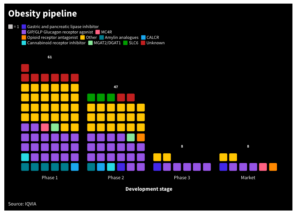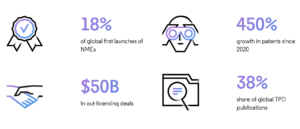
RTSM benefits: configuration versus customisation
In the 1990s, the first clinical IVR systems (Interactive Voice Response Systems) were developed in order to randomise patients over the phone, and later, to dispense drug and resupply sites as well.
The first IRT systems – Interactive Response Technology – were completely custom-coded. Each application was built from scratch and therefore could meet all the sponsor’s needs for a study because it was 100% customised. End-users used them since they met their study needs, but they took forever to build and were very expensive.
In the early 2000s, the first parameter-driven, web-based systems were introduced. They were less expensive to build and saved time but only if the system fit the sponsor’s needs out of the box. So, the industry went from 100% customisable (coded) systems to partially configurable systems. Those systems were off-the-shelf, meaning that the end-user needed to take the system as it was and force-fit it to their internal processes, or even more disruptive, change their internal processes to fit the technology. These systems were more than likely considered enterprise systems and were so ingrained into the organisation there was a very high probability an organisation would stay with older systems purely for the change management it would take to free themselves from the status quo.
Thankfully, technology continues to evolve, either driven by regulatory shifts or scientific breakthroughs. As an example, just think about all the new technologies that were spurred on by remote trials or the shift toward biologics and immunotherapies. They can no longer be implemented into the fabric of the organization, but rather need to ebb and flow with the needs of clinical trials.
This brings the discussion back to the partially configurable, off-the-shelf concept. The core of the system stays the same, but certain features can be customised to fit the needs of the specific organisation and study. From an operational perspective, that may sound great. However, it is important to understand that any amount of customisation involves coding. Coding requires more time and resources and ultimately limits future use of that product for anything beyond that specific study. Users can’t just flip a switch and turn off the new add-ons when they don’t need them. It also makes future changes both cumbersome and costly. Companies often customise so much that they lose sight of the core function of what is really needed from the system.
Benefits through configurability
How can the industry achieve the benefits of customisation with the flexibility to adapt to changing study needs as well as the introduction of new requirements (driven by science or regulatory)? The answer is 100% configurability.
With Prancer RTSM®, 4G Clinical’s Randomisation and Trial Supply Management software, the pendulum has swung all the way from 100% customisation to 100% configurable. This is because configurable systems are designed to adapt to client needs. Flexibility is literally built into the system itself.
Configurable systems DO allow users to flip a switch. So, if there’s a need for a feature in study A, but not for study B, it’s simple to adjust. Likewise, if users want the system flow and vernacular to match internal SOPs and processes, it’s just a few clicks away.
That said, not all configurable systems are created equal. For the above to work, the system needs to be 100% configurable, not just employ a configurable tool, because that is where custom coding creeps back into the picture. Even if the system is 80-90% configurable, the remaining 10-20% is custom-coded, or customisable. If this was an industry in which the parameters needed on Day 1 were exactly what was needed on days 10, 30, 90, and so forth, there would be no issue. But this is a rare occurrence.
One of the key benefits of working with 4G Clinical’s 100% configurable Prancer RTSM® is that typically added on features are already implemented into the core product. If a feature is built for one client, it is not only available for that client’s multiple studies but is also available for all other clients. Each can have its own flavour of that feature – again, that flexibility is built right in. And since users can turn them on and off whenever needed, changes are no longer a disruption to a study.
4G Clinical, a global leader in RTSM and clinical supply optimisation solutions for the life sciences industry, has offices in the U.S., (Boston, Portland), and in Europe: Amsterdam, Basel, Brussels, Copenhagen, Dublin, Nottingham, and Rheinbach, as well as Tokyo and Tel Aviv. To learn more about our fully cloud-based, 100% configurable, and flexible solutions for accelerating clinical trials visit www.4gclinical.eu.
This article was originally published in European Biotechnology Magazine Spring Edition 2022.


 IQVIA
IQVIA White House
White House Clarivate
Clarivate